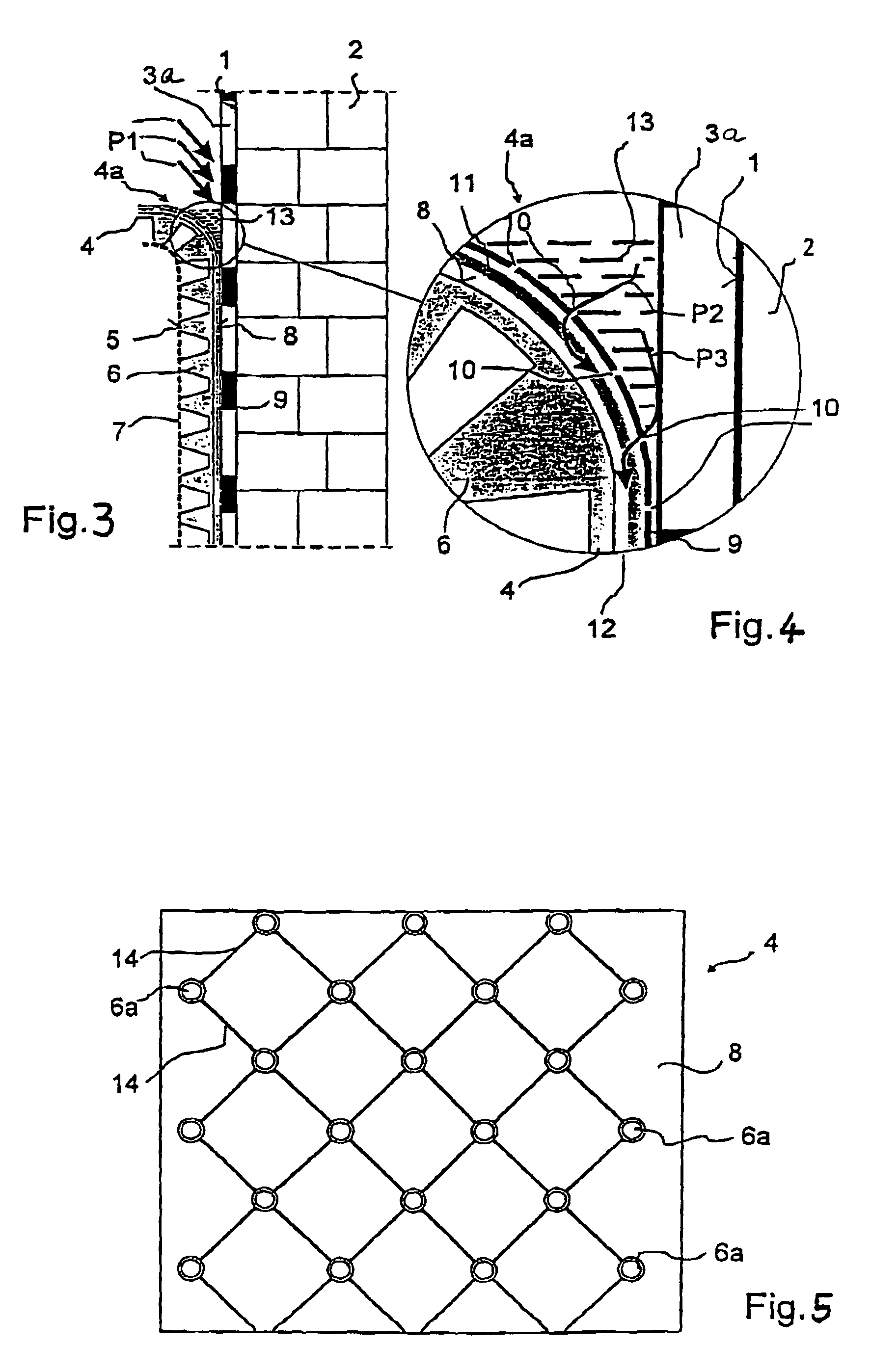Membrane for the protection of buildings
a membrane and building technology, applied in building components, climate change adaptation, application, etc., can solve the problems of total loss of the hollow space between the insulation and the studded membrane, collapse of the cell structure of the insulating material, etc., to achieve the same protective
- Summary
- Abstract
- Description
- Claims
- Application Information
AI Technical Summary
Benefits of technology
Problems solved by technology
Method used
Image
Examples
Embodiment Construction
[0051]In the cross-sectional view shown in FIG. 1, an insulation 3, e.g. a perimeter insulation of foamed plastic, is mounted on an outer surface 1 of a building 2. To protect insulation 3 against damage caused by the soil (not shown), a studded membrane 4 of plastic (e.g. PE) is mounted in front of insulation 3, fixed either to the latter or to the outer surface 1 of building 2.
[0052]A water-permeable fleece 7 is mounted on the end faces 5 of studs 6 of studded membrane 4 for draining the adjacent soil. Water penetrating through fleece 7 into the space between fleece 7 and studded membrane 4 is drained towards the bottom by channels formed between studs 6.
[0053]To form a drainage 12 on the reverse side 8 of studded membrane 4, channels 14 running diagonally—relative to the longitudinal direction of studded membrane 4—are provided between stud funnels 6a (cf. FIG. 2). Channels 14, which are about 0.8 mm wide and about 0.5 mm deep, are sufficient. The diagonal interval of channels 14...
PUM
 Login to View More
Login to View More Abstract
Description
Claims
Application Information
 Login to View More
Login to View More - R&D
- Intellectual Property
- Life Sciences
- Materials
- Tech Scout
- Unparalleled Data Quality
- Higher Quality Content
- 60% Fewer Hallucinations
Browse by: Latest US Patents, China's latest patents, Technical Efficacy Thesaurus, Application Domain, Technology Topic, Popular Technical Reports.
© 2025 PatSnap. All rights reserved.Legal|Privacy policy|Modern Slavery Act Transparency Statement|Sitemap|About US| Contact US: help@patsnap.com



